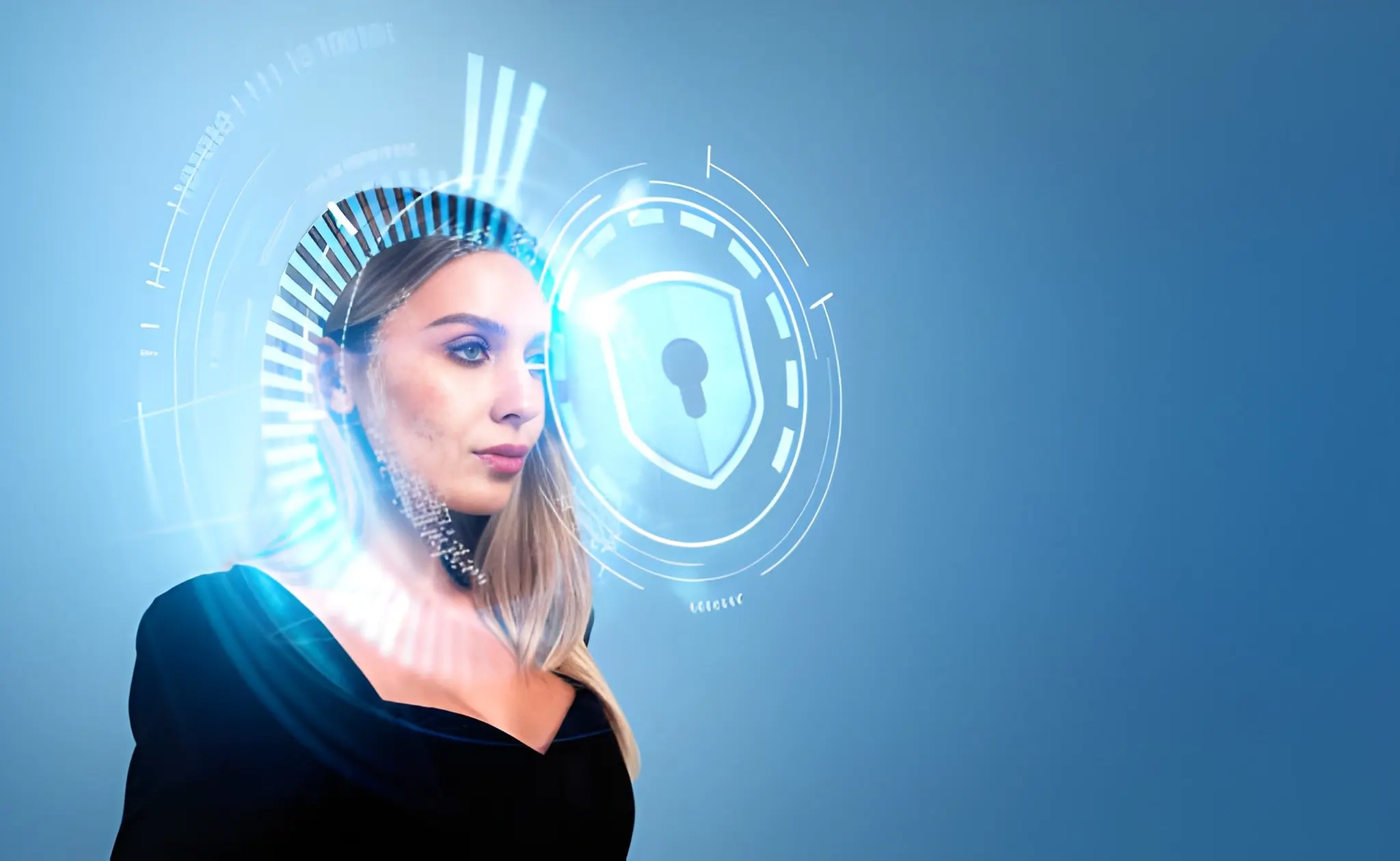Technological advancements have allowed devices not only to listen to commands, but also to analyze faces, detect emotions, and recognize identities. From an experimental tool in research labs, Facial Recognition Software (FRS) has evolved into a global technology used in mobile devices, airports, offices, and financial systems. It is a technology that profoundly alters the personalized experience of identity verification, access security, and experience enhancement.
Facial recognition software is not a security tool. It is an innovative technology that poses challenges to security, trust, and privacy. This article provides an in-depth 360-degree view of the technology and how it works, its applications, the challenges it encounters, and the future of technology.
Understanding Facial Recognition Software
What Is Facial Recognition?
Facial recognition software involves identifying or confirming a person’s identity through their face. This technology uses algorithms, artificial intelligence (AI), and deep learning to detect, analyze, and match faces against a database or a template.
Basically, it’s a digital system that differentiates faces from each other which, until recently, was thought to be a task exclusive to humans.
Core Objective
Facial recognition’s primary objective is to verify identity quickly, reliably, and without physical contact. It transforms complex biometric data into insights that can determine if a person is authenticated. Examples include unlocking a smartphone, accessing areas in airports, and authorizing access in secure systems.
The Evolution of Facial Recognition Technology
From Pixels to Precision
The first facial recognition systems had to analyze 2D images and used basic algorithms that measured the geometry of a face and mapped key features like the eyes, nose, and mouth. These systems struggled with lighting, angles, and the quality of the images used.Deep learning brought big changes in the process. Convolutional Neural Networks (CNNs) and Other feature extraction methods aid systems in learning different face representations (called “embeddings”) directly from large databases. This achieves accuracy and dependability like never before.
Key Milestones
1960s–1980s: Early experiments on computerized facial mapping.
1990s: Eigenfaces and pattern recognition algorithms.
2010s: Performance revolution with deep learning and AI.
2020s: Real time recognition and 3D sensing. Development with privacy in mind.
How Facial Recognition Software Works
Step 1: Image Capture
Every process begins with an image or video frame containing one or more human faces. Camera quality and lighting weighs significantly on accuracy. Some high security situations use infrared or depth sensing cameras to avoid spoofing.
Step 2: Face Detection
After capturing an image, the next step involves identifying and locating human faces. The system differentiates a face from a background and identifies specific landmark coordinates for eyes, lips and chin.
Step 3: Alignment and Normalization
Every face is geometrically aligned and standardized in a manner that it does not change the results no matter the angle or expression. Standardization ensures all faces are compared under identical conditions.
Step 4: Feature Extraction
At this point, the AI technology creates a facial embedding, which is a digital snapshot of a person’s face. The AI is able to compute a distinct value for every face, which allows the AI to efficiently compare different pictures of the same face.
Step 5: Matching and Verification
In this step, the system performs the comparison between stored templates or databases with the extracted features.
– 1:1 Matching (Verification): Confirms if the face matches with a specific identity claim.
– 1:N Matching (Identification): Searches a database to find potential matches.
Applications of Facial Recognition Software
1. Security and Access Control
Secure access is one of the most prevalent applications of the FRS. Faceless entry to airports, offices, and banks is becoming the mainstream. The advantages are obvious; passing is faster, forgetting a password, and human errors are a lot more difficult to impose.
2. Mobile Device Authentication
Facial recognition technology assists in unlocking phones, authorizing transactions, and payment which is both convenient and secure. Users are given a password-free experience.
3. Law Enforcement and Public Safety
For the identification of suspects and missing people, police departments and security agencies use FRS. They also verify people during investigations. Ethical use of the technology also needs to be carefully planned and executed to avoid bias in this application.
4. Border Control and Airports
Facial recognition technology has been implemented at airports to confirm identities at boarding and immigration, which significantly improve security and decrease waiting lines.
5. Healthcare and Patient Identification
FRS technology helps hospitals accurately verify patients in order to decrease treatment and recordkeeping errors.
6. Retail and Customer Analytics
In retail, customer analytics helps service personalization and experience optimization. This includes everything from managing customer flow to gathering customer demographics using facial recognition.
The Science Behind Facial Recognition Accuracy
Measuring Performance
System performance in facial recognition is evaluated using the following metrics:
– False Acceptance Rate (FAR): The odds of two different people being recognized as the same person.
– False Rejection Rate (FRR): The odds of denying access for recognition of a match.
– True Acceptance Rate (TAR): The proportion of successful recognitions.
– Equal Error Rate (EER): The intersection of FAR and FRR.
High system accuracy is indicated by low EER.
Factors Affecting Accuracy
– Lighting and Angle: Lack of light or lighting from the side reduces the recognition accuracy.
– Image Quality: Blurriness or lower resolution will negatively affect recognition.
– Expression Variations: Smiling or frowning causes slight but different geometrical shapes.
– Demographic Diversity: Systems disproportionately underperform based on age or ethnicity when trained on limited data sets.
Liveness Detection and Its Spoofing Prevention Techniques
Spoofing Attacks
Using photographs, 3D imitations, and even deepfake videos to spoof and evade facial recognition technology has been an ongoing problem. This has led to the development of liveness detection which checks the validity of a face in real-time.
Liveness Detection Techniques
1. Active Liveness: Users are encouraged to perform certain actions like blinking, smiling, or turning their heads.
2. Passive Liveness: The User doesn’t have to take any actions. The AI just assesses the user’s face using texture, depth and micro-movements.
3. Infrared and 3D Scanning: The realness of a person is gauged using heat and depth sensors, which is then combined with 3D imaging.
The combination of all of the above has warranted liveness detection as a standard security measure.
Ethical and Privacy Implications
Consent and Data Protection
Biometric information refers to facial data and is thus considered sensitive. Integration and Storage of facial templates require consent or legal justification.
Fairness and Potential Bias
Data sets which are unbalanced can lead to bias which is the difference in recognition in either gender or ethnicity. Developers need to deploy fairness through the use of diverse data sets, and transparency reports.
Concerns About Freedom and Surveillance
The use of facial recognition technology in public settings initiates debates surrounding mass surveillance and the right to privacy. Its appropriate use requires established limits, defined and enforceable retention periods, and constant systems of accountability.
The Legal and Regulatory Framework
Global Governance
Across the globe, countries are enacting and putting into practice laws centered on privacy in biometric systems. In certain areas, the use of Data Protection Impact Assessments (DPIAs) is a prerequisite in the implementation of facial recognition technology.
Principles for Compliance
Lawful Basis: Data collection is to be done in a legal, defined, and justified manner.
Transparency: People are to be informed of the use of their facial recognition data.
Security: Templates are to be encrypted and saved in a safe location.
Limited Retention: Data is to be stored only for the time it serves its purpose.
Human Oversight: Critical decisions must always have human judgment as a legal requirement.
These principles provide a sustainable pathway for embracing innovation with a sense of ethical accountability.
Challenges Facing the Recognition of a Face Software
1. Bias and Fairness
Striving for demographic neutrality is a complex issue. The impact of small inaccuracies in facial recognition technology is heightened in professions like law enforcement and the hiring process.
2. Data Security
The biometric database is compromised, and due to the nature of biometric systems, facial recognition data can’t be reset like a password. Therefore, sophisticated encryption and distributed systems of storage is a must.
3. Public Perception
Trust from the public relies on having policies in place. Systems that have no policies designed around them face friction or even legal issues.
4. Technological Limitations
Performance can still be affected due to extreme lighting, aging, and occlusions (like masks). Research continues in attempts to minimize these factors.
Core of Artificial Intelligence and Facial Recognition
AI drives modern facial recognition. Deep neural networks to learn and represent millions of parameters that identify distinct facial features. It becomes more accurate and versatile the more data the AI processes.
Machine Learning Pipeline
1. Data Collection: Acquiring large, diverse collections of facial images.
2. Model Training: Utilizing deep learning to train models that identify and extract distinct facial features.
3. Validation: Testing models on unseen data to confirm accuracy.
4. Continuous Learning: Evaluating and learning from outcomes to improve future results.
Ethical AI Integration
Integrating AI ethically means ensuring models do not perpetuate socio-economic disparities while also providing explainable, auditable, and fair results.
The Future of Facial Recognition Technology
Emerging Trends
– 3D Recognition: Improves accuracy under varying lighting conditions by using depth perception.
– Edge Computing: Improvements in latency and privacy due to local processing.
– Privacy-Preserving Algorithms: The use of federated learning and differential learning to keep raw data secure.
– Emotion Recognition: Understanding complex behaviors to better assist with human-computer interactions.
– Multi-Modal Biometrics: Using face, voice, and behaviors together to enhance identity verification.
Responsible Innovation
The future of FRS is responsible innovation. All the stakeholders (developers, policymakers, and users) must work together to balance the power of tech and the right to safety.
Responsible Deployment of Facial Recognition
Recommended Organizational Practices
1. Do Risk Assessments: Predict potential harms prior to system rollout.
2. Dataset Diversity: Ensure representation to reduce biases.
3. Adopt Privacy-by-Design: Data protection should be integrated system-wide.
4. Conduct Audits: Ensure there are external audits and accurate assessments.
5. User Control: Provide users- opt in and data removal choice.
Trust Through Transparency
Trust comes from the public understanding the system. Once people see how their data is processed, acceptance grows and fears are alleviated.
Industry Use Cases Leading the Revolution
Airports and Transportation
Economic safety and comfort are being offered as facial recognition technology reduces queues, enhances border control, and streamlines passenger processing.
Financial Services
Facial recognition technology in banks and fintech facilitates defraud detection, provides contactless identity verification, and seamless onboarding, eliminating the need for manual document checks.
Smart Cities
Cities are starting to use urban infrastructure like smart technologies that use face analytics technology to help monitor crowds and manage resources. This makes urban spaces safer and smarter.
Education and Remote Learning
In the education sector, remote exam supervision and attendance tracking are some of the applications of face recognition technology. Data privacy is ensured during these processes by limited storage and transparency.
Security Architecture and Data Handling
Encryption and Storage
Facial recognition templates should always be protected by encryption and stored using one way transformation methods. Further protection can be enhanced with decentralized storage, zero knowledge proofs and other distributed systems.
Access Control
Biometric data should only be accessed by people with the right authority or by specific automated systems. This is managed by role-based and tiered access systems whereby users only get the data necessary for their tasks.
Monitoring and Audit Trails
Every recognition event should be logged for accountability purposes. This is complemented by regular audits to ensure ethical and legal compliance.
Public Trust and Social Acceptance
Building Confidence Through Governance
The level of public trust in face recognition technology is directly related to the transparency of governance systems. Trust and confidence are further built with the knowledge that systems are fully auditable and consent based.
Education and Awareness
Education on the workings of the technology promotes public confidence in face recognition systems especially in the areas of safety, accuracy, and data protection. Awareness can demystify occurrences and reduce painted fears.
Global Impact of Facial Recognition Software
Facial recognition technology is more than a security feature — it pulls businesses into a new digital era. It powers seamless border crossing, secure payments, and customized interactions in various economic sectors. Governments, businesses, and individuals are all experiencing the technology’s versatility and adopting it in various ways.
But the adoption of this technology requires a stable equilibrium among innovation, regulation, and ethics. The ability to identify must not be transformed into the ability to surveil.
Conclusion: Recognizing the Future
Facial recognition is archetypal of 21st century advancements — the seamless integration of artificial intelligence, biometrics, and human identities into a digital format. The technology offers exceptional security and convenience, but expects a counterbalancing emphasis on equity and respect for personal and private data.
With the challenges of new technology, the focus should be on making systems faster and smarter. The new imperative is making systems trustworthy, transparent, and human-centered.
The future of recognition technology will be its ethics, not its code.
Also Read-Benefits of Managed IT Services for Growing Businesses










